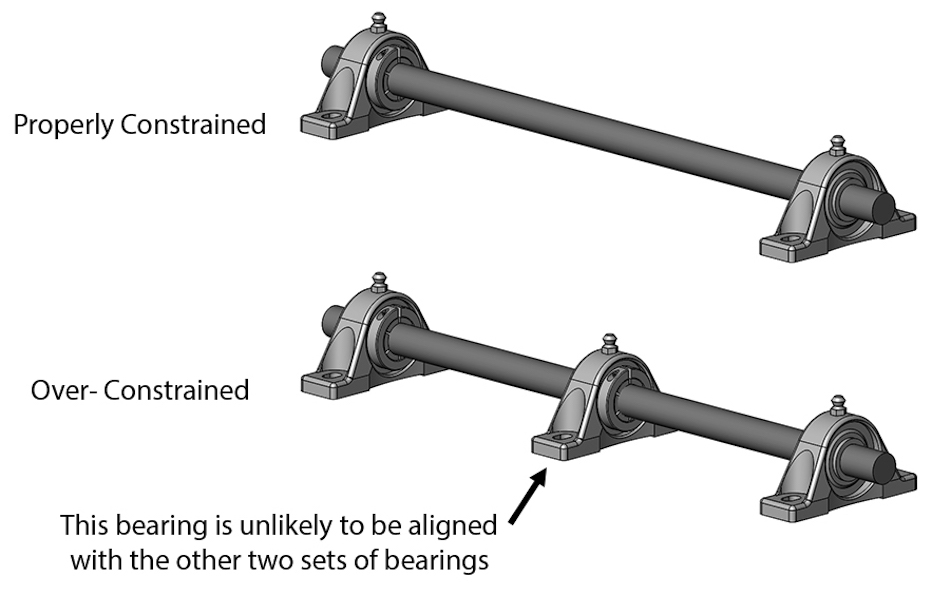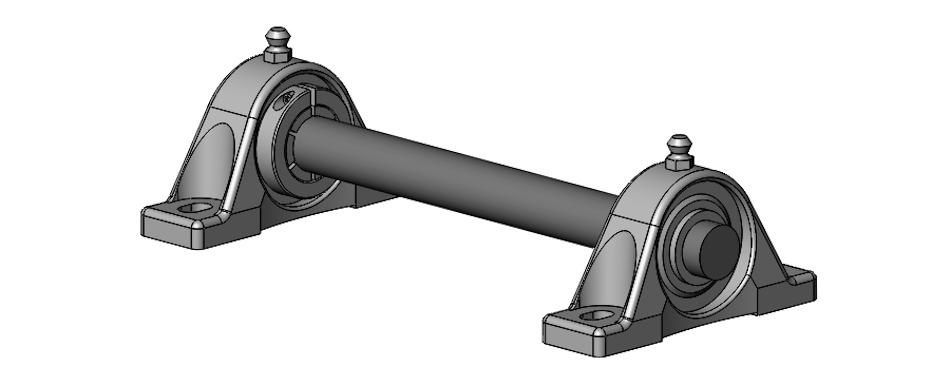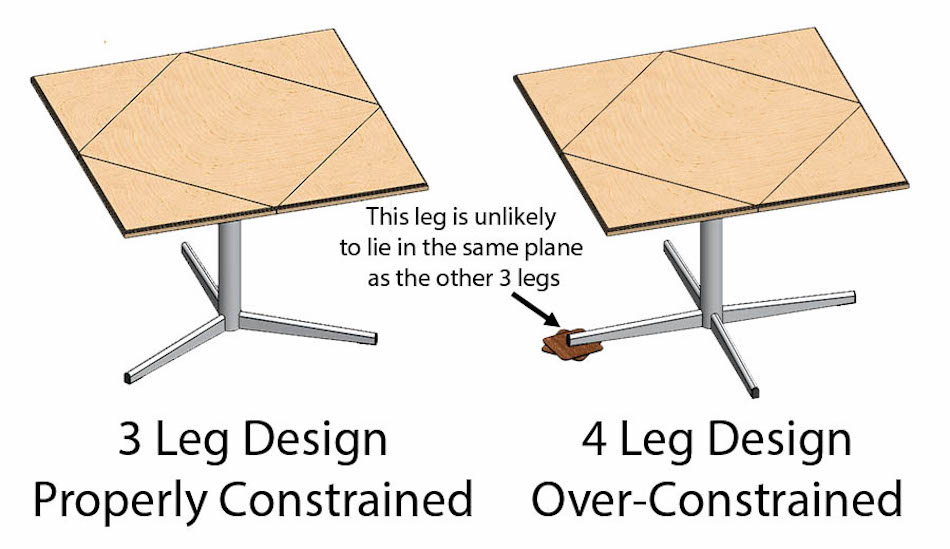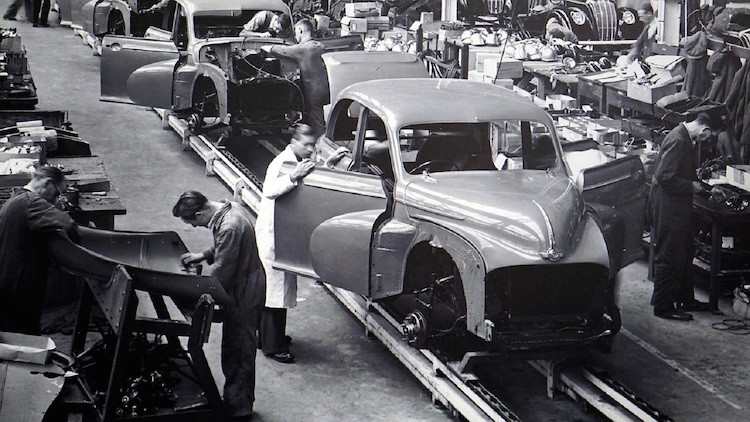Time to read: 5 min
If you design products, whether you’re a full time in-house engineer, a professional freelance industrial designer, or a moonlighting inventor, you’ve likely come across situations in which there is no solution to the design problem you have come across. I’m not referring to a scenario in which you cannot come up with a solution; I’m talking about a situation in which no solution exists. Not sure what I’m talking about? Here’s an exercise that will clearly illustrate my point:
Pick a number given the following constraints:
-
The number has to be from 1-10.
-
The number has to be an integer.
-
The number has to be odd.
-
The number has to be a multiple of 4.
Of course, there is no number that works. It isn’t a question of your creativity; there simply isn’t a number that satisfies all of the criteria. If you remove any one of the constraints, there are several possible answers. But if you need to satisfy all four, you’re out of luck.
This is called over-constraint and can be very frustrating. When over-constraint occurs in a product’s design, it can often result in an actual solution. However, that solution is far from ideal and comes with many issues. Luckily, you can avoid over-constraint and have a happy life designing great products by learning from the lessons in this article.
Exact Constraints
The theory of exact constraints is a simple one. It states that there is an exact number of ideal constraints for every situation. The idea number of constraints is one constraint for each degree of freedom that needs to be constrained. Any less, and your part will swing when it shouldn’t or slide when it shouldn’t, etc. Any more, and things simply don’t work quite right. To apply the theory of exact constraints, figure out how many degrees of freedom need to be constrained. Then, constrain only those degrees of freedom.
Below are two examples of over-constraint and how to fix them:
Two Points Make a Line
You might have learned way back in math class that two points make a line. By the way, there is a condition for this to be true: Both points cannot be coincident (take up the same space). If you add a third point to the mix, it will unlikely be on the same line that connects the first two points.
While it is possible for the third point to be collinear with the first two points (on the same line as the first two points), it is hard to achieve perfectly. If you place the third point just slightly off your intended mark, it will not be truly collinear, and the result can be problematic.
The most common example of this situation is a drive shaft that is held by three sets of bearings. There is a set of bearings on each end of the drive shaft and another set of bearings somewhere near the middle of the shaft. The intent of the third set of bearings is to help reduce flexure near the center of the drive shaft, in order to reduce vibration in the system.
In reality, the third set of bearings is the most likely source of vibration in the system. After all, we just learned that the center of each set of bearings is almost certainly not in perfect alignment. So, while the intent of the center set of bearings is to constrain the drive shaft so that it is always in perfect alignment, it is actually the reason the drive shaft is in a constant state of misalignment, which will cause excessive and unnecessary vibration. This is a clear example of over-constraint.

Pro Tip:
If you would like to design a drive shaft that operates with minimal vibration and minimal driveshaft flexure, do not try to use a third set of bearings in the center of the drive shaft. Instead, shorten the drive shaft, and/or increase the diameter of the drive shaft, and/or use a stiffer material for the drive shaft.

The image above shows the same drive shaft, but shortened to increase stiffness.
Three Points Make a Plane
You might have also learned way back in math class that three points make a plane. Of course, there are conditions for this to be true as well: None of the points can be coincident (take up the same space) and the three points cannot be collinear (on the same line). Any three points that meet those two conditions create a plane.
If you add a fourth point to the mix, it will unlikely be on the same plane. Just like there is an equation for every line, there is also an equation for every plane. So, if you apply that equation to the fourth point, it would theoretically be on that plane. However, if you place the fourth point just slightly off your intended mark, it will not be on the plane, and the result can be problematic.
The most common example of this situation is a restaurant table with four legs. Ever wonder why the restaurant table ALWAYS wobbles? Well, over-constraint is the culprit.
The contact point of any three of the four legs already makes a plane. The fourth leg’s contact point almost certainly doesn’t fall on the same plane that the first three legs have already created. That misalignment results in the wobble and the resulting need to place one to three coasters underneath. This is yet another clear example of over-constraint.

Side Note:
If engineering principles dictate that a table should really only have three legs, then why do most tables have four legs? Well, a table with three legs might not wobble, but it sure isn’t very stable.
Most tables are either circular, square or rectangular. They are rarely triangular. That means that there is likely a surface of the table itself that rests outside of the triangle that the three legs make with one another. Result: unless those three legs are spread far out from the center of the table, it can fall over easier than you would like.
Summing Things Up
Design constraints are a good thing. They keep flagpoles pointing straight up and your roof rack securely attached to your vehicle. Applying more constraints than necessary is actually a bad thing.
Over-constraint is why parts often don’t fit together when you think they should and why you should consider carrying a coaster in your back pocket. When designing products that have features that need to be constrained, it’s best to figure out and implement the minimum number of constraints necessary to adequately constrain the feature.
Over-constraint is bad. Avoid it and live a happy life.










